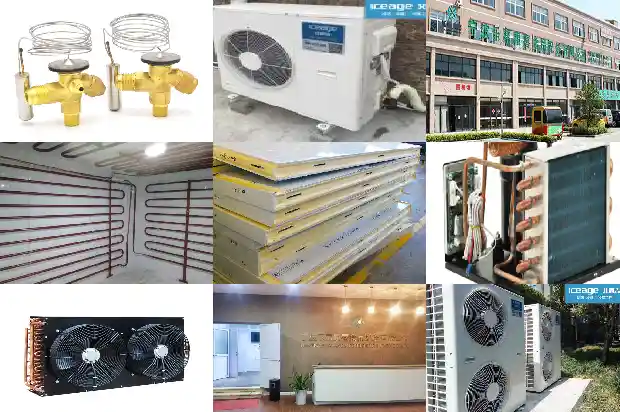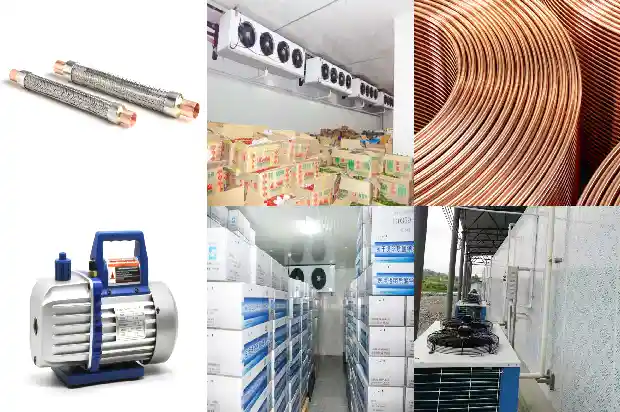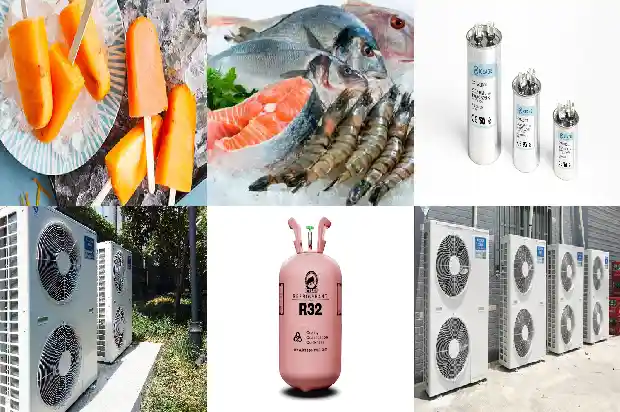Reasons for Frost Formation in Cold Storage and Defrosting Methods
2025-02-14
Frost formation on the evaporator of a cold storage will lead to an increase in thermal resistance and a decrease in the heat transfer coefficient.
Therefore, defrosting should be carried out in a timely manner. When determining the actual defrosting plan, sometimes one defrosting method is adopted, and sometimes different methods are combined.
For example, for the rack - type cooling coils, smooth wall - and - ceiling cooling coils in the cold storage, the manual - combined - with - hot - gas method can be used. Usually, manual defrosting is carried out, and hot - gas defrosting is performed regularly to thoroughly remove the frost that is difficult to clean by manual defrosting and discharge the accumulated oil in the pipeline.
For air coolers, the water - flushing and hot - gas methods are used. For cases where there is a large amount of frost and frequent defrosting is required, the hot - gas - combined - with - water defrosting method can be adopted.
The current defrosting methods in cold storage are as follows:


Therefore, defrosting should be carried out in a timely manner. When determining the actual defrosting plan, sometimes one defrosting method is adopted, and sometimes different methods are combined.
For example, for the rack - type cooling coils, smooth wall - and - ceiling cooling coils in the cold storage, the manual - combined - with - hot - gas method can be used. Usually, manual defrosting is carried out, and hot - gas defrosting is performed regularly to thoroughly remove the frost that is difficult to clean by manual defrosting and discharge the accumulated oil in the pipeline.

For air coolers, the water - flushing and hot - gas methods are used. For cases where there is a large amount of frost and frequent defrosting is required, the hot - gas - combined - with - water defrosting method can be adopted.
The current defrosting methods in cold storage are as follows:
- Hot - gas defrosting: It uses the heat released during the condensation of the superheated vapor discharged from the Yantai compressor to melt the frost layer on the surface of the evaporator. Its characteristics are strong applicability and reasonable energy utilization. For ammonia refrigeration systems, in addition to defrosting, the accumulated oil in the cold - storage evaporator can also be flushed out.
However, the disadvantage of this method is that the defrosting time in the cold storage is relatively long, which has a certain impact on the cold - storage temperature, and the regulating station of the Yantai refrigeration equipment system is complex. - Electric defrosting: It uses electric heating elements to generate heat for defrosting the cold storage.
The system is simple, easy to operate, and easy to automate, but it consumes a lot of electricity. - Manual defrosting: It is simple and easy to implement, has little impact on the cold - storage temperature, but has a high labor intensity, is not thorough in defrosting, and has limitations.
- Water - flushing defrosting: The defrosting water is sprayed onto the surface of the cold - storage evaporator through a spraying device to thaw and melt the frost layer, and then it is discharged through the drainage pipeline together. The advantage of this method is that it is highly efficient, has a simple operation procedure, and causes little temperature fluctuation in the cold storage.
From the energy perspective, the cooling consumption per square meter of the evaporation area can reach 250 - 400 kJ.
However, the water - flushing defrosting method also has disadvantages. Water - flushing defrosting is likely to cause fog in the cold storage, lead to dripping from the ceiling of the cold room, and reduce the service life, etc.
Related Articles
- What Are the Common Reasons for Difficulties in Cooling a Cold Storage?
- Analysis of Seven Reasons for Ice Formation in Computer Room Air Conditioners
- What Are the Reasons for Insufficient Air Output of Screw Air Compressors?
- Reasons for Pump Body Failures in Cold Storage Compressors
- What are the reasons for the inactivity of the automotive air conditioning compressor? What are the common faults?
- What are the reasons for the frequent start-up and tripping of the refrigerated air dryer in the cold storage?
- Reasons and Solutions for High and Low Condensing Pressure in Air-cooled and Water-cooled Systems
- 15 Reasons for Excessive Temperature Rise of Motors
- Reasons for Installing Thermal Insulation Layers in Cold Storages
- What are the reasons for the poor oil return of screw compressors?
- 7 Reasons for Low Air Pressure in Cold Water Unit
- Reasons for Higher Cost of Controlled Atmosphere Cold Storage than Ordinary Cold Storage
- Five potential reasons for the deteriorating performance of car air conditioning
- Nine common reasons for compressor damage
- Influence of Fin Spacing of Evaporator in Air Cooler on Frost Formation
- Frosting and Defrosting Issues of Air - cooled Heat Pumps
- 10 Symptoms and Causes of Abnormal Frosting in Heat Pumps
- Fin Spacing Design of Cooler and Several Knowledge Points of Defrosting in Cold Storage
